Featured image: Erich Roepke
Sail-to-ski expeditions have become fairly commonplace in the last decade, especially in the fjords of Norway. Sail-to-ski missions in Greenland, however, are much fewer and farther between for a multitude of reasons. It’s hard to get there, and it’s even harder to navigate the uncharted waters. For professional skiers Jess Baker and Rachael Burks, the logistical hurdles were not enough to keep the pair from visiting the same place, on the same boat with the same captain, a second time following their successful expedition in 2019.
Now officially available online, “Going Greenland” is the award-winning story of Burks’ and Baker’s return to the Arctic Circle but climate change, an environmentally conscious captain and fickle arctic weather create an experience entirely unique to itself. To dive even deeper into the story, we caught up with Burks to talk about sailing and skiing in Greenland, what it was like navigating vaguely familiar waters with nothing but wind and solar energy as well as who has the weakest stomach of the crew. Keep reading for the full Q&A below.
First off, how are you? How has your early season been so far in the Wasatch?
I’m doing really well! Early season has been good, I’ve had a lot of fun the days I’ve been out, but I haven’t gotten out as much as I would like.
Your new and award-winning film, “Going Greenland,” is your second visit to the Arctic. How did the storyline transform from the start of the project to the end after experiencing your return?
The storyline of the first visit was to go out and explore, truly things that had (hopefully) never been skied before. I can say pretty confidently our first year had multiple first descents, but first descents aside, it was just incredible to go deep into uncharted waters and to be able to ski down to fjords where there are literally no marked anchorages, no depth measurements on the nautical map. It’s really, really cool to be in that part of the world. So our first trip was just exploration and one of the best ski trips I’ve ever been on in my life because we had three straight weeks of corn skiing. Literally, I’m not joking [laughs]. We took a day off on a sunny day, that never happens! It was freaking crazy. When we got home, we realized the reason the skiing was so great, and we were in an eternal corn cycle because it was the beginning of the hottest season ever on record Greenland has ever seen.
Jess [Baker] has a scientific background, and she immediately started doing research. We dug a little deeper and found out that global warming is affecting Greenland in an extreme way so for our second trip, we wanted to go back and compare and contrast what we were actually seeing as civilians. We felt like we had the power of comparison on our side to talk about the changes we were seeing. At the same time, while the world was getting hotter and hotter in those two years [between trips], our captain of the vessel we were on, the Knut, decided to take out the diesel engine and put together a huge fundraiser to fund the eco-Knut. They reached their goal, replaced the diesel engine with an electric, solar-powered engine and got the Knut up and running again on natural energy sources, which is pretty cool.
Tell me more about this eco-Knut. What are the biggest differences from a regular sailboat?
Things that you don’t think about! The thing is, something as simple as anchoring—finding an anchor spot, and getting in and out of a harbor was now very complicated. If at night, you’re anchored in a cove up against a huge fjord wall and the wind shifts, suddenly you’re being pushed up against the wall. Having a motor is really, really handy. You can’t just throw up a sail in a narrow fjord, it’s so much more complicated than that. Can it be done? Yeah, sure. But is it dangerous? Yeah, really dangerous.
Another big, huge difference is when the wind isn’t in your favor, you don’t really have any other option [laughs]. In the movie, there is a part where we are really bummed that we can’t get to what we have started calling Couloir Town and what you don’t know is that it’s only 13 kilometers away, that’s like 9 miles, that’s not that far, and that little itty bitty distance was the difference between skiing first- and second-descent lines. If we had a motor, we could have been there in an hour and a half. But we couldn’t get there, there was absolutely no way for us to get there and back because the wind wasn’t in our favor and we were just hosed. That’s the big difference, you can’t get to where you want to be, and then it also adds a dangerous element that people don’t think about.
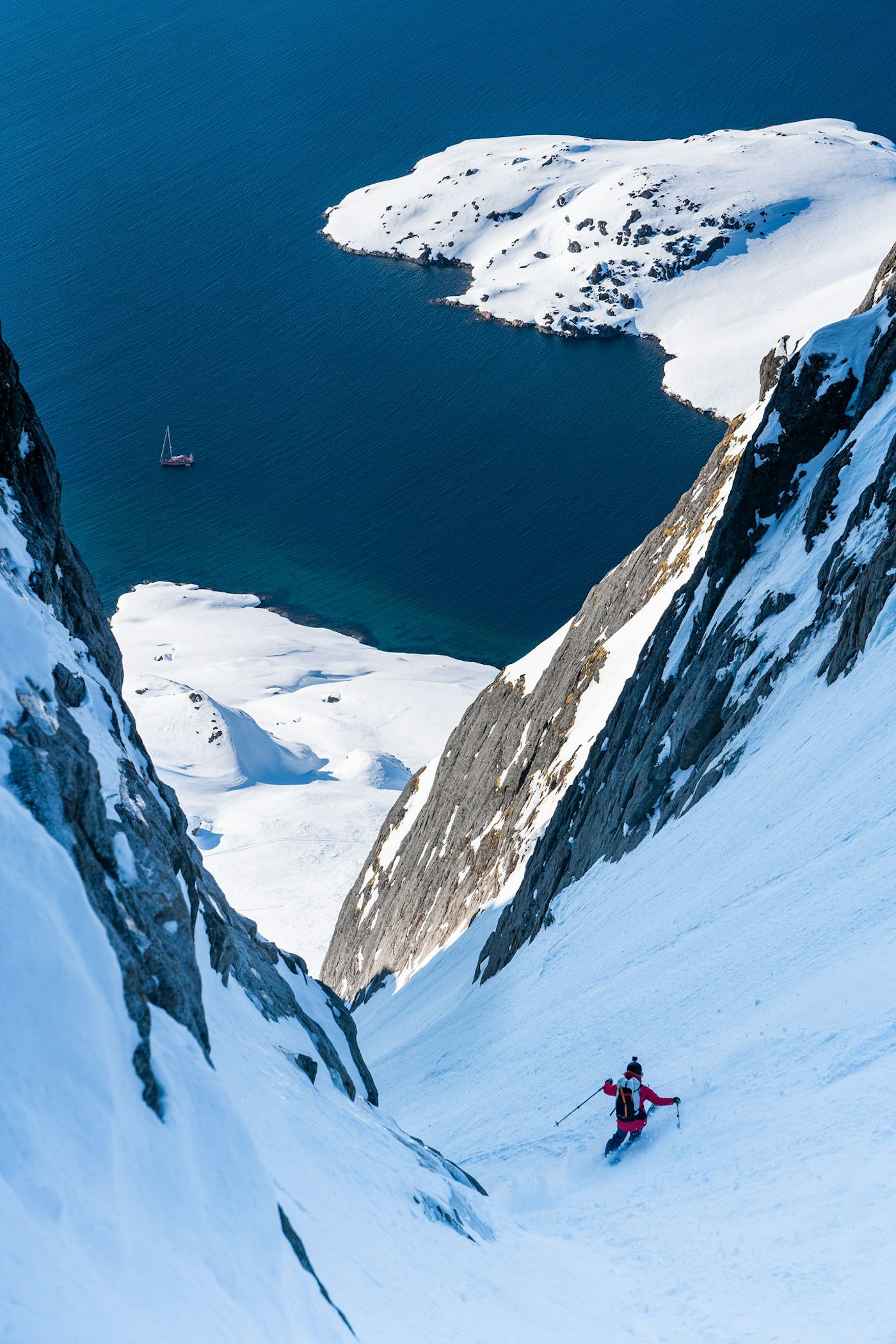
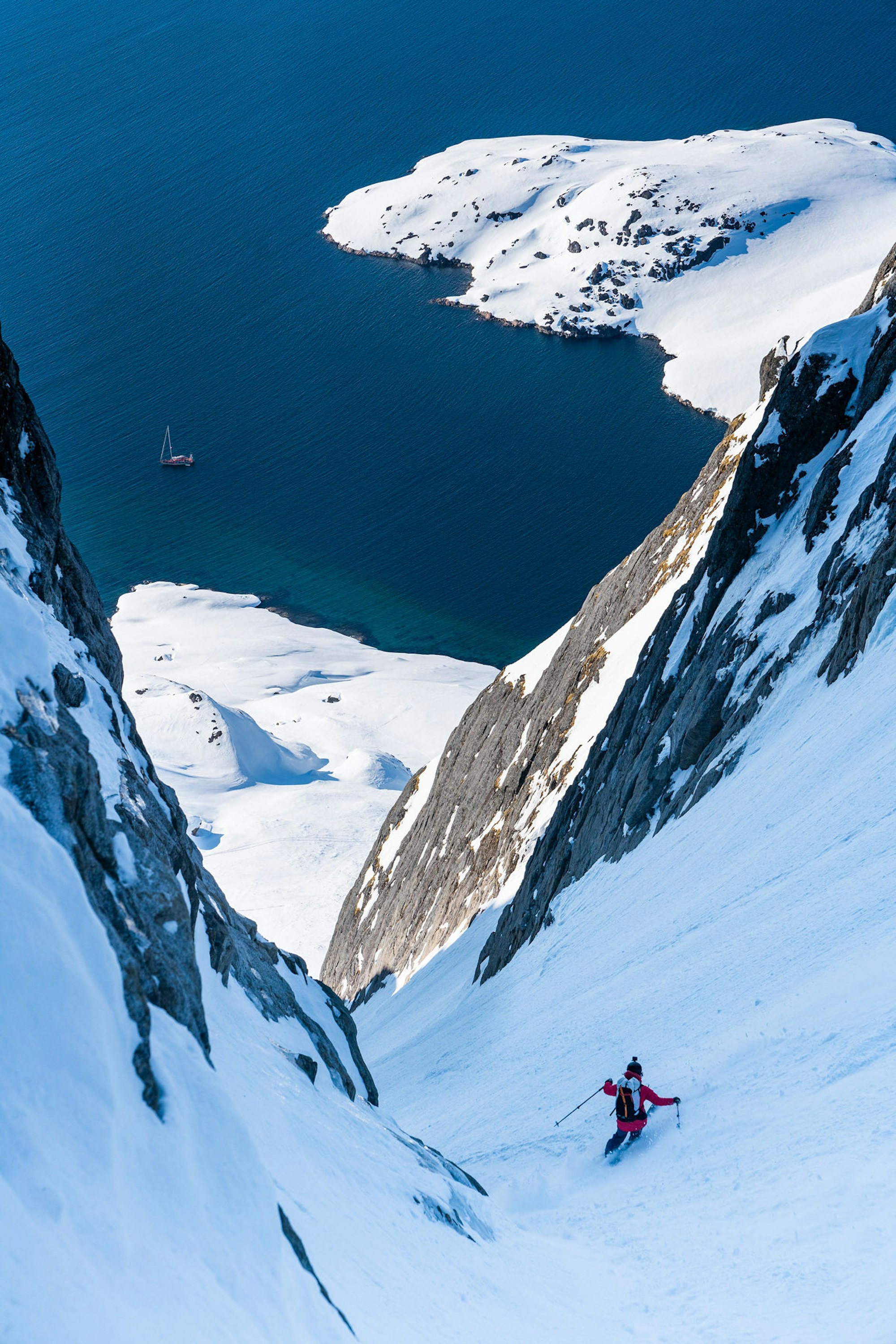
Rachael Burks navigates her way down to uncharted waters. PHOTO: Sophie Danison
There were quite a few challenges you and your crew faced while out to sea. What sticks out in your brain as the toughest?
I have to go with the lack of engine, it was a big issue toward the end of our trip. It’s kind of nuts when you’re sailing out toward the open ocean in a huge arctic winter storm and the only potential anchorage before we are out in the open ocean in said storm with islands all over that you can’t see without a working computer—which is also a power issue—is iced over. We only had enough power to attempt to anchor once, maybe twice, and that was scary. I had to manage a lot of fear, I was a little out of my comfort zone [laughs].
Any happy or funny accidents aboard the Knut?
Oh yeah, there are a ton of happy and funny moments. We sailed all night to get to this spot that we knew from 2019 as a safe anchorage spot but we had a gnarly sea. It was a gnarly night, people were puking, no sleep, and the next day we attempted what we’re now calling Narcolarctic Couloir—this has nothing to do with narcolepsy and everything to do with the Greek root nárkē, which refers to slowing down the brain or being utterly exhausted, this is not at all an ableist comment on narcolepsy, I realize that is a serious thing—because we were literal zombies walking up this thing. Just side-by-side skinning, arms hanging, both of us moaning because we hadn’t slept all night because we were so scared and puking, and then we walked our asses up this couloir [laughs].
What is the skiing like in Greenland? The couloirs look incredible, but is the snow any good?
So many variable conditions, laughable giggly stuff where one turn is great and the next turn feels like you’re about to die [laughs]. The first time we were there in 2019, like I said, was three weeks of corn, best skiing I’ve ever had and then this time, right before we showed up, they received literally six feet of snow. We got a lot of wind, and it was cold, so we got a lot of ice, tons of breakable crust and we had some super crazy thermal glacial puddles. It was wild.
Were avalanches of any concern?
There were pockets pulling out when we first got there due to that six feet sitting on top of a bunch of ocean-affected warm snow. We had to mitigate avalanches our entire trip but the snowpack healed during our time there.
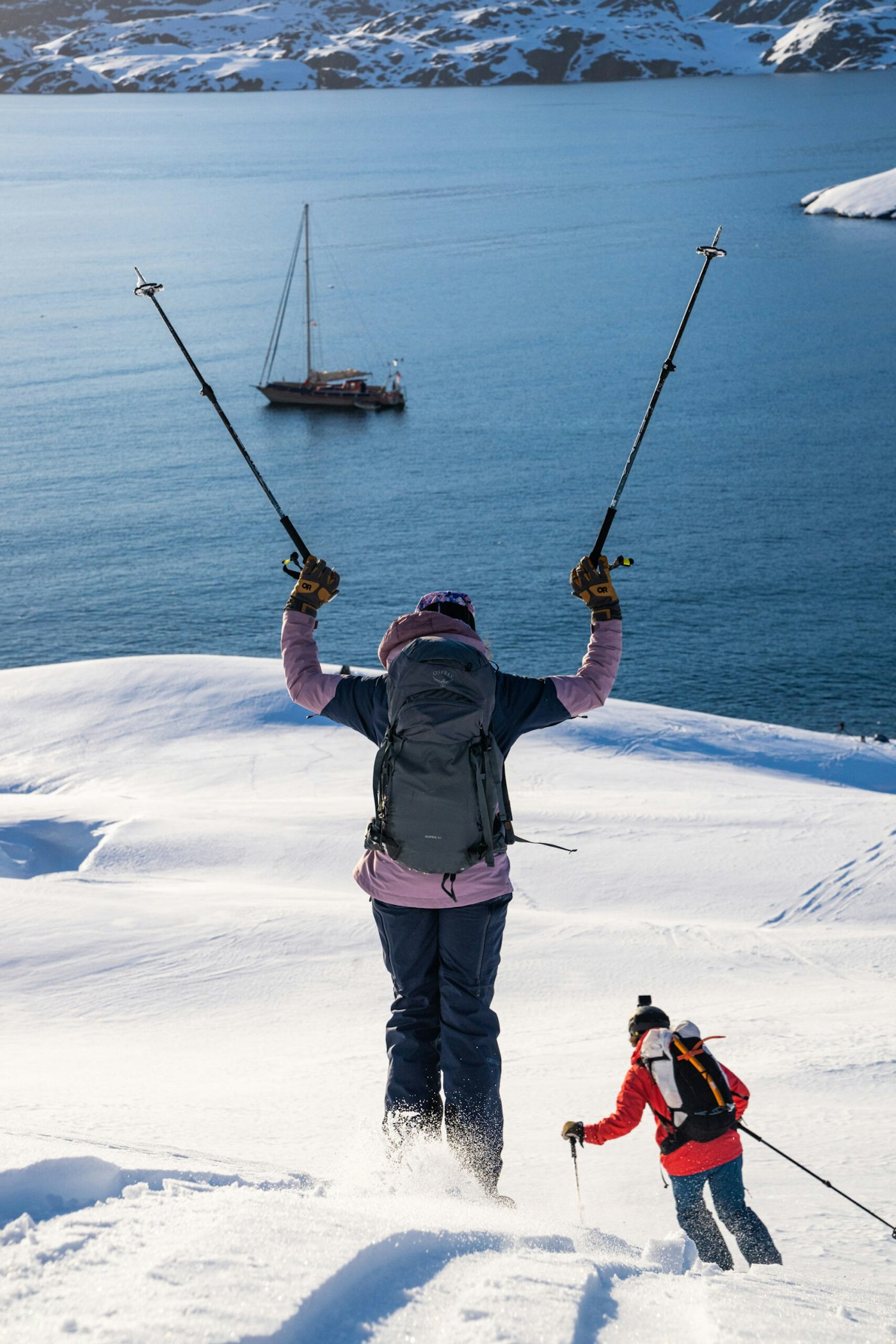
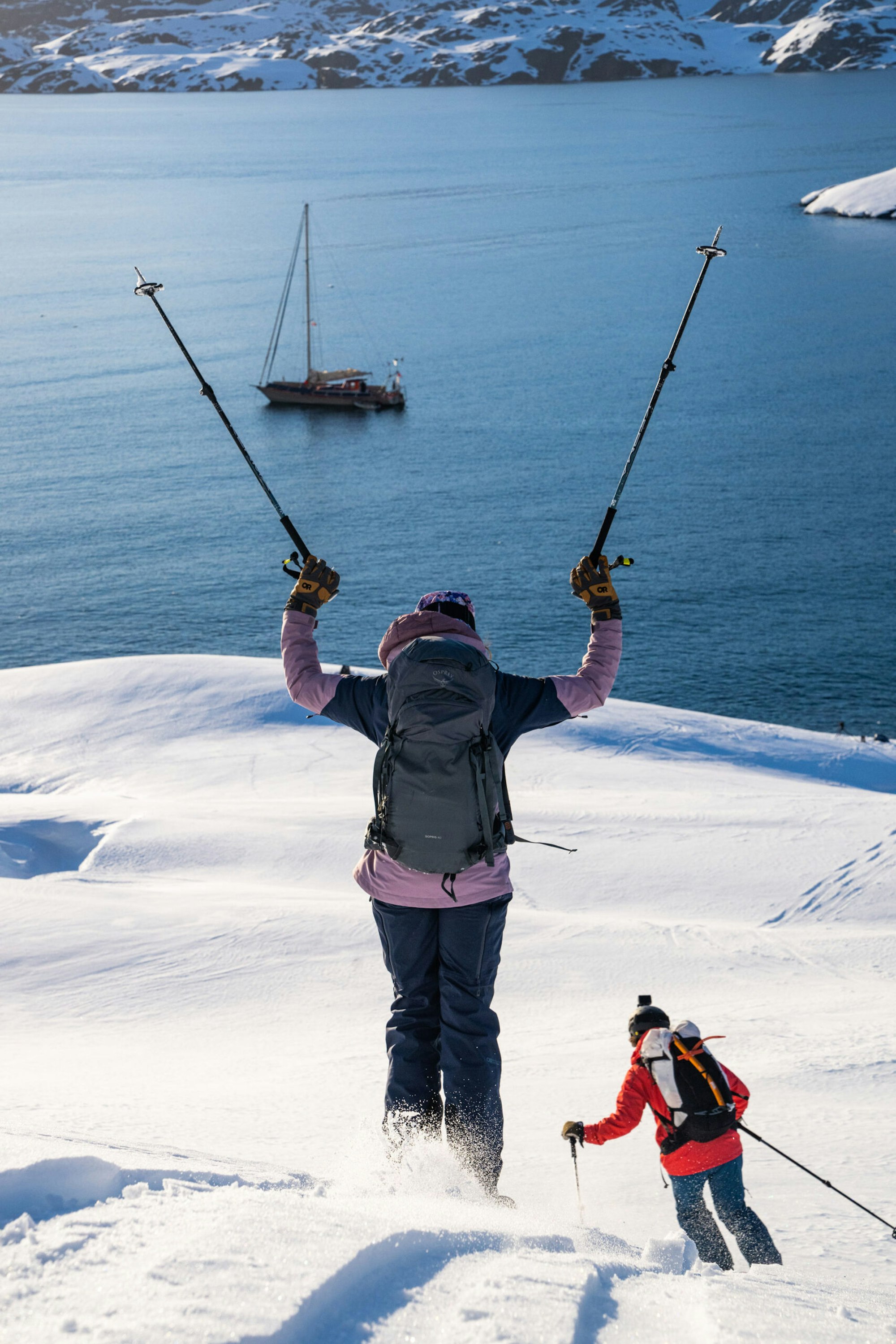
Jess Baker and Rachael Burks party lap their way back to the eco-Knut. PHOTO: Sophie Danison
Who got the worst seasickness? How do you manage that when you’re on a boat for an extended period of time?
Jess! I had to hold her hair back and also hold the door open because of the waves to keep it from smacking her head, so it was a two-hand job. I had my feet propped up on the doorsill so I could keep myself upright during all the rocking, and then I had her hair in one hand and the door in the other. True fact: Jess says that she doesn’t get seasick. I think it’s funny, she doesn’t [laughs].
What tips do you have for anyone setting out on a sail-to-ski expedition?
Be prepared to have absolutely no personal space for however long you’re on the expedition. Even on bigger boats, your drying space for all of your wet-ass gear, your personal space, you just don’t have it and if there is any sort of motion sickness involved, you get uncomfortable very fast. So get ready to have an uncomfortable boat experience and then a glorious ski. And then I would say have some muck boots like Xtratufs, tall deck boots for getting in and out of the skiff, on and offshore.
Will there be a three-peat in Greenland for you and Jess Baker?
Absolutely not [laughs]. That’s a hard no unless Jess invites me. I have the memory of a goldfish with Jess. We have a scary experience, I say I’m never getting back on a boat, and then she’s like, “Hey, do you wanna…?” and I immediately respond with a yes. If Jess invites me back to Greenland, I’m going back to Greenland with Jess, but I am going to demand a generator, I don’t care if it lives in my bunk, but it’s going to come just in case we run out of solar energy to fuel the boat, and I’m probably not going to produce a film [laughs].
![[Q&A] "Going Greenland" With Rachael Burks](https://www.datocms-assets.com/163516/1751464600-rachael-burks-photo-by-erich-roepke.jpg?auto=format&bg=FFFFFF&w=100)
![[Q&A] "Going Greenland" With Rachael Burks](https://www.datocms-assets.com/163516/1751464600-rachael-burks-photo-by-erich-roepke.jpg?auto=format&bg=FFFFFF&w=1200)

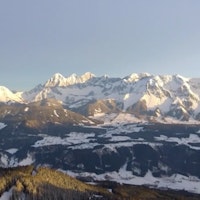
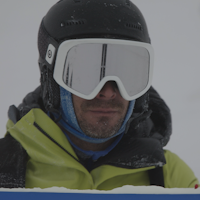

![[GIVEAWAY] Win a Legendary Ski Trip with Icelantic's Road to the Rocks](https://www.datocms-assets.com/163516/1765233064-r2r26_freeskier_leaderboard1.jpg?auto=format&w=400&h=300&fit=crop&crop=faces,entropy)
![[GIVEAWAY] Win a 4-Night Karma Campervan Rental and go Ski the Powder Highway](https://www.datocms-assets.com/163516/1767816935-copy-of-dji_0608-1.jpg?auto=format&w=400&h=300&fit=crop&crop=faces,entropy)

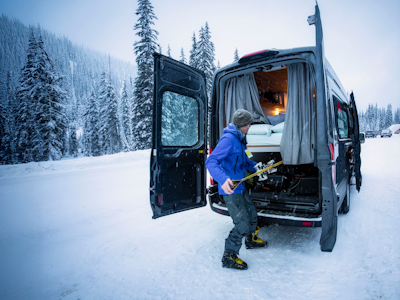
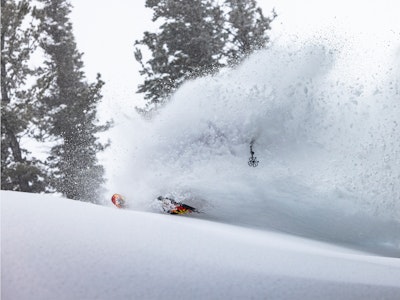
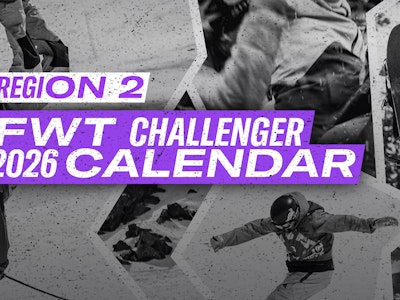
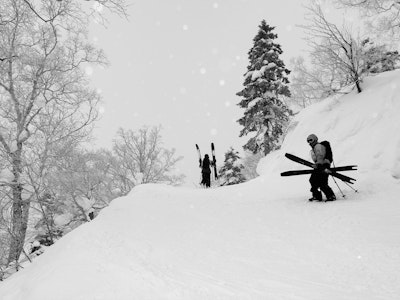
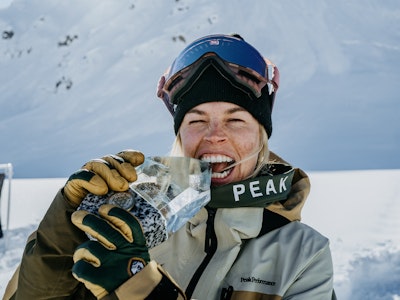
![[Q&A] "Going Greenland" With Rachael Burks](https://www.datocms-assets.com/163516/1751464600-rachael-burks-photo-by-erich-roepke.jpg?auto=format&bg=FFFFFF&w=2000)